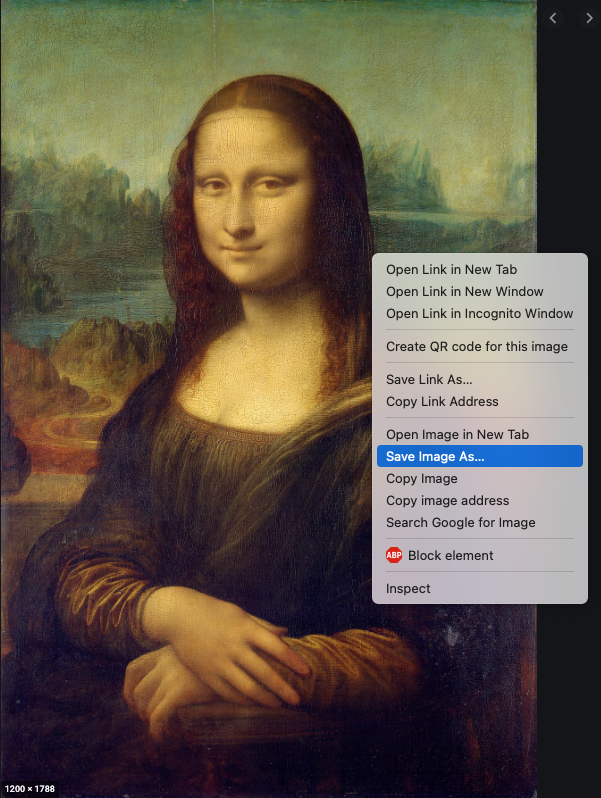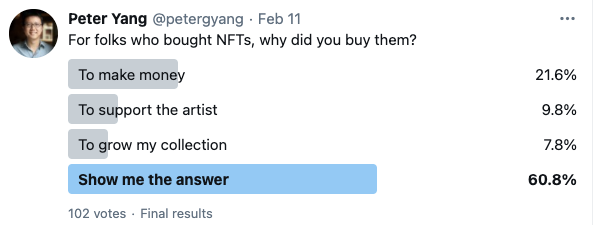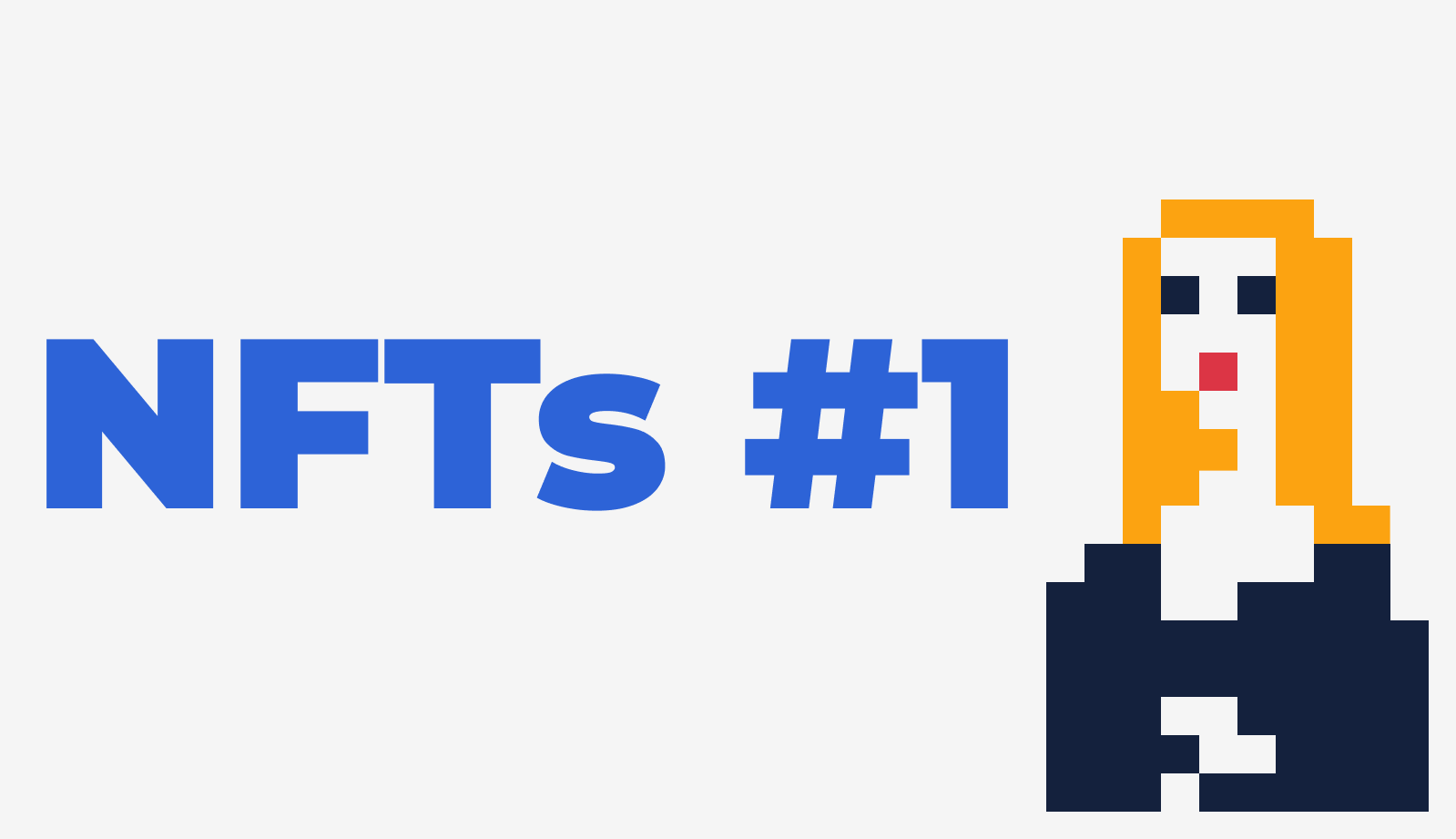In the classical sense of the term, technology has fueled progress in the art world for centuries.
The invention of perspective principles and the production of oil paint was a turning point in the Renaissance. They allowed for a more realistic depiction of imagery, enabling artists to focus on more details.
The oil tube helped impressionists work outside of their studios, while the science of color changed how they treated color in their work, which was especially visible with pointillism.
The same can be said about photography and video that changed the perception of art by giving birth to new forms of media.
Modern technology has also had a massive impact on the art world—Machine Learning and 3D printing are but a few recent tech developments that have pushed the boundaries of creativity.
Technology’s most recent notable involvement in this field are NFTs. In this article, we’ll take a closer look at what they are and how they can impact human creative expression.
We're launching our very own NFT soon! Join our e-mail list to be the first to learn any updates 😄
You can join our list either through the top sidebar or scroll till the very end.
What are NFTs?
Non-fungible tokens, also known as NFTs, are collectible digital assets. Providing an all-encompassing definition of an NFT can be complicated since it involves a myriad of awfully specific technical terms like Ethereum blockchain, ledger, tokenization, and authentication.
To avoid derailing this article into an intro to cryptocurrency jargon, let’s focus on what it means to be “non-fungible.” Probably the closest synonym for it is “non-interchangeable.” Think of a dollar bill, for instance. If you swap banknote of equal value with someone, nothing really changes—both of you still have the same amount of money and the value they’re assigned.
NFTs, on the other hand, are unique—they come with proof of ownership and authenticity.

As a result, by purchasing a non-fungible JPEG file of a piece of art, it’s incorrect to assume that it’s the same as simply downloading from the internet.
Artists and the NFT trend
Non-fungible tokens are currently more popular with celebrities and influencers, as artists are still trying to navigate this new medium. It’s important to mention that the art world has its own very peculiar dynamic compared to that of social media stardom.
Artists are also known to be resistant to new trends, especially those who are well-established within a particular niche. It takes time to explore a new medium when your intent isn’t to capitalize on it but instead use it for creative self-expression.
Fortunately, NFTs see gradual adoption. Nifty Gateway, a popular platform for digital assets, has seen a sharp increase in sales within the first trimester of 2021 compared to that of 2020.
In the first four months of this year, Nifty Gateway launched 1,958 new NFTs, compared to only 49 NFTs during the same period in 2020. This is undoubtedly correlated with a growing number of artists selling their work online as non-fungible tokens.
How artists and creators should navigate NFTs
While it's tempting to follow trends, an artist should be aware of a multitude of things before embarking on their NFT journey.
Like physical art, crypto art is subject to copyright, which is the foundation of intellectual property. Artists should be aware of the ins and outs of copyright and should understand how and under what circumstances these should be used.
Infringing on copyrighted work without consent can land you in hot water, often beginning with receiving a cease and desist letter from the complainant. Knowing what to do with a cease and desist letter is crucial, as ignoring it could escalate the issue to legal proceedings, potentially leading to significant financial penalties and damage to your reputation.
Secondly, transitioning into crypto art has to be a diligently thought-out business decision. This is a potential source of your livelihood; therefore, it’s essential to invest a substantial amount of time in studying the market and identifying the relationships between the marketplaces, the artists, and the buyers.
Further, it’s crucial to understand how the economics of selling and reselling your NFT works. To sell a piece of digital art, marketplaces typically collect fees. Whenever your NFT is resold, you’re eligible to collect a certain amount of commission (royalties) as well. These terms and conditions vary across marketplaces, and becoming familiar with them is essential.
Last but not least, make sure to calibrate your expectations accordingly. Digital assets are priced based on the economics of scarcity, which is defined by the relationship between supply and demand. The supply of a Banksy NFT is extremely limited compared to the demand for it. Therefore, having a substantial following before you dive into creating digital assets is important to start making money.
One last thought—we should all be mindful of the impact that tokenizing and selling NFTs has on the environment. We kindly ask you to invest a bit of your time dedicated to research to understand the ecological implications of the process.
What about NFTs collectors? How to judge an artwork?
So the important question here is, “Why are you looking to buy an NFT?”. There are many possible answers to this question. To many, it’s an investment, which they’re looking to capitalize on in the short or long term. Aside from the scarcity factor, there’s a wide array of other parameters that need to be taken into account to assess whether your investment will generate profit. Here are a few of them:
Who's behind this NFT artwork?
What's the concept?
How has the artist performed so far? Are we dealing with an overnight NFT artist or one with a solid career?
How would you appreciate this asset in 5 or 10 years?
Do you see any potential for this artist, concept, and artwork to become more famous?
Is the artist attempting to break boundaries and create truly innovative art?

On the other hand, if you’re in the game to grow your art collection or support artists you care about—kudos to that. Most of the above questions might not relate to you but are still worthy of exploring. You’re about to invest a part of your disposable income into digital art, so assessing the soundness of your decision is always a great idea.
Bottom line
We truly live in an exciting time. We’re here to see the very beginning of what appears to be the future of art, and probably money.
Like all new technology, NFTs demand due diligence and substantial research to be understood and used as a medium for expression and an opportunity for storing value.





